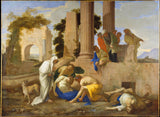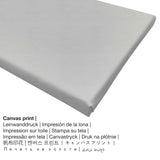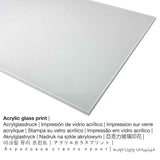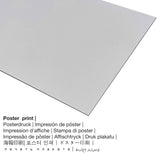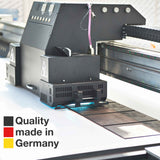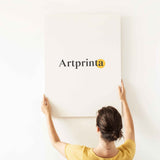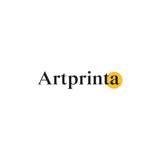Andrea di ọdụm, 1640 - Tobit na-eli ndị nwụrụ anwụ - ọmarịcha nka
Ụtụ gụnyere. Mbupu gbakọrọ na ndenye ọpụpụ.
Eziokwu na-akpali mmasị banyere eserese a karịrị afọ 380
In 1640 na Italian onye na-ese ihe Andrea di ọdụm made the baroque masterpiece Tobit Burying the Dead. Emere nke mbụ ya na nha 50 1/4 x 68 1/2 na (127,6 x 174 cm) na e mere ya na Usoro of mmanụ na kwaaji. Today, this piece of art is part of the collection of Museumlọ ihe ngosi nka nke Obodo. With courtesy of: The Metropolitan Museum of Art, New York, Gwynne Andrews Fund, 1989 (nwere ikike: ngalaba ọha). Ọzọkwa, ihe nkiri ahụ nwere kreditline: Gwynne Andrews Fund, 1989. The alignment of the digital reproduction is in landscape format and has an aspect ratio of 1.4 : 1, which implies that the length is 40% longer than the width. The painter Andrea di Lione was a European artist from Italy, whose style can be attributed primarily to Baroque. The European artist lived for a total of 75 afọ - Amụrụ na 1610 wee nwụọ na 1685.
Ihe di
Maka mbipụta nka ọ bụla, anyị na-enye ụdị nha & ihe dị iche iche. Anyị na-ahapụ gị ka ịhọrọ n'ime ụdị ndị a:
- Mbipụta nke aluminom: An Aluminium Dibond print is a material with an impressive depth effect, which makes a fashionable look throuch a surface structure, that is non-reflective. The bright & white sections of the original artpiece shine with a silky gloss but without the glare.
- Mbipụta iko acrylic na-egbuke egbuke: A glossy print on acrylic glass, often referred to as a print on plexiglass, transforms the original into amazing décor. Your artwork is being made thanks to the help of modern UV printing technology.
- Mbipụta kwaaji: A canvas direct print is a printed cotton canvas mounted on a wood stretcher. Also, a canvas print generates a cosy and pleasant effect. A printed canvas of this masterpiece will let you turn your new fine art print into a large artwork as you would see in a gallery. Canvas prints are relatively low in weight, which means that it is easy to hang up your Canvas print without additional wall-mounts. Canvas prints are suited for any type of wall in your house.
- Mpempe akwụkwọ ederede (akwa akwa akwa): Our poster is a UV printed sheet of flat cotton canvas paper with a slight surface structure. Please note, that depending on the size of the canvas poster print we add a white margin of approximately 2-6cm round about the painting, which facilitates the framing.
Ederede iwu dị mkpa: We try whatever we can in order to describe the products as clearly as possible and to exhibit them visually on the product detail pages. Please keep in mind that the tone of the print materials and the imprint can differ slightly from the image on your device's screen. Depending on the screen settings and the nature of the surface, color pigments may not be printed as realistically as the digital version depicted here. Because all the are printed and processed by hand, there might also be minor variations in the motif's size and exact position.
Nkọwapụta edemede
| Ụdị ngwaahịa: | ọmarịcha nka |
| Mmeputakwa: | dijitalụ mmeputakwa |
| Usoro mmepụta: | Mbipụta UV ozugbo |
| Mmalite ngwaahịa: | arụpụtara na Germany |
| Ụdị ngwaahịa: | mmepụta ihe na-achọ |
| Ngwaahịa were: | ihe ndozi mgbidi, ụlọ ihe osise nka |
| Nhazi nka nka: | nhazi odida obodo |
| Oke akụkụ onyonyo: | 1.4: 1 ogologo ruo obosara |
| Akụkụ onyonyo pụtara: | ogologo bụ 40% ogologo karịa obosara |
| Nhọrọ dị: | Mbipụta iko acrylic (nwere ezigbo mkpuchi iko), mbipụta ọla (aluminium dibond), mbipụta akwa akwa, mbipụta akwụkwọ mmado (akwụkwọ kwaaji) |
| Mbipụta kanvas (akwa akwa na etiti ihe ndọtị): | 70x50cm - 28x20", 140x100cm - 55x39" |
| Mpempe iko acrylic (nwere ezigbo mkpuchi iko) nha dị iche iche: | 70x50cm - 28x20", 140x100cm - 55x39" |
| Mpempe akwụkwọ mmado (akwụkwọ kwaaji) nha: | 70x50cm - 28x20" |
| Nhọrọ nke mbipụta aluminom (aluminium dibond material) | 70x50cm - 28x20", 140x100cm - 55x39" |
| Nhazi mbipụta nka: | na-enweghị etiti |
Nkọwa gbasara ọrụ nka mbụ
| Aha nka nka: | "Tobit Burying the Dead" |
| Nhazi: | sere |
| Otu izugbe: | nka ochie |
| Century: | 17th narị afọ |
| Emepụtara na: | 1640 |
| Afọ nka: | ihe karịrị afọ 380 |
| Usoro nka izizi: | mmanụ na kwaaji |
| Nha izizi (ọrụ nka): | 50 1/4 x 68 1/2 na (127,6 x 174 cm) |
| Egosiputara na: | Museumlọ ihe ngosi nka nke Obodo |
| Ebe ebe ngosi nka: | New York City, New York, Njikota Obodo Amerika |
| E Nwere na: | Museumlọ ihe ngosi nka nke Obodo |
| License: | ngalaba ọha |
| Site n'aka: | Ụlọ ihe ngosi nka nke Metropolitan, New York, Gwynne Andrews Fund, 1989 |
| Ebe E Si Nweta: | Gwynne Andrews Fund, 1989 |
Ose okwu
| Aha onye nka: | Andrea di ọdụm |
| Aha ndị ọzọ: | Lione Andrea da, Andrea de Leoni, Leone Andrea de, Leone, Andrea Leone, Andrea di Lione, De Lione Andrea, Leone Andrea da, Andrea di Leone, Leone Andrea di, A. Leone, Andrea de Leone, Lione Andrea di, Andrea de Lione, Lione Andrea de |
| okike onye nka: | nwoke |
| Obodo onye nka: | Italian |
| Ọrụ: | onye na-ese ihe |
| Obodo obibi: | Italy |
| nhazi ọkwa: | nna ukwu ochie |
| Ụdị nka: | Baroque |
| Afọ ọnwụ: | 75 afọ |
| Afọ ọmụmụ: | 1610 |
| Afọ ọnwụ: | 1685 |
Copyright right, www.artprinta.com (Artprinta)
General specifications from the museum (© Copyright - The Metropolitan Museum of Art - Museumlọ ihe ngosi nka nke Obodo)
The cloaked figure is Tobit, a devout Jew who in defiance of Sennacherib's orders directed the burial of the Jews whom the king had killed outside the walls of Nineveh (Tobit I:17–20). Andrea di Lione was in Rome in the 1640s, where he knew both Giovanni Benedetto Castiglione and Nicolas Poussin, and this work is indebted to both of those artists.

